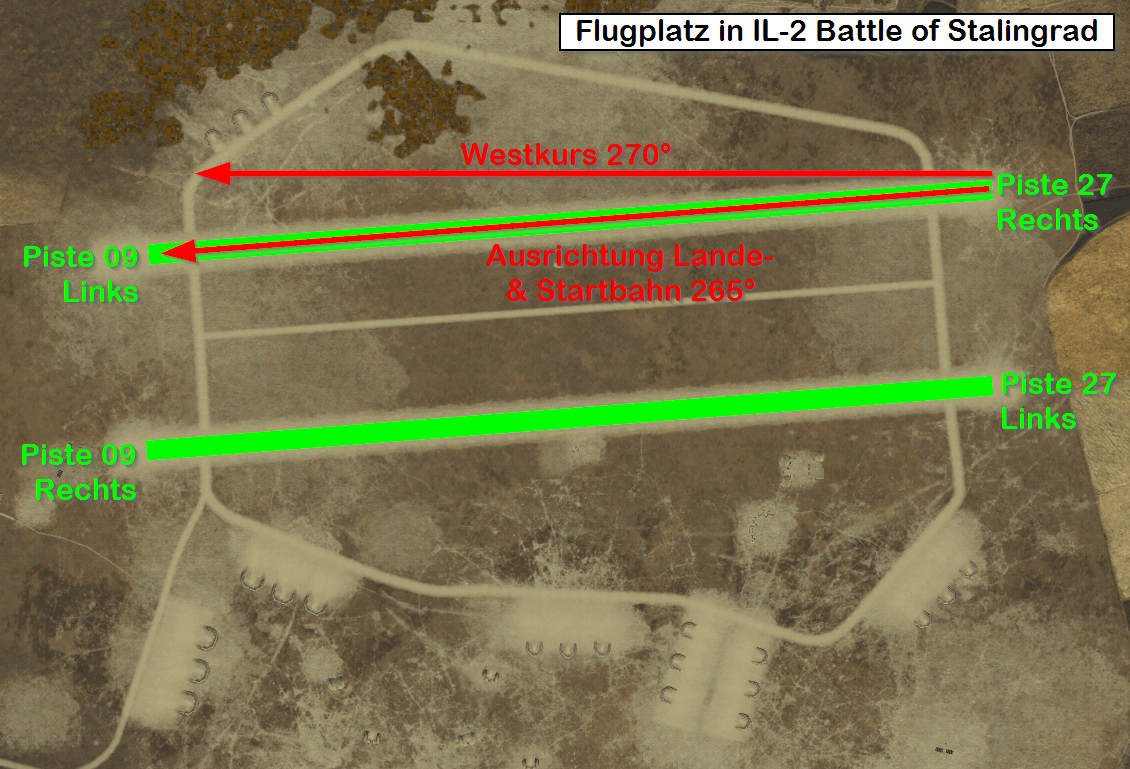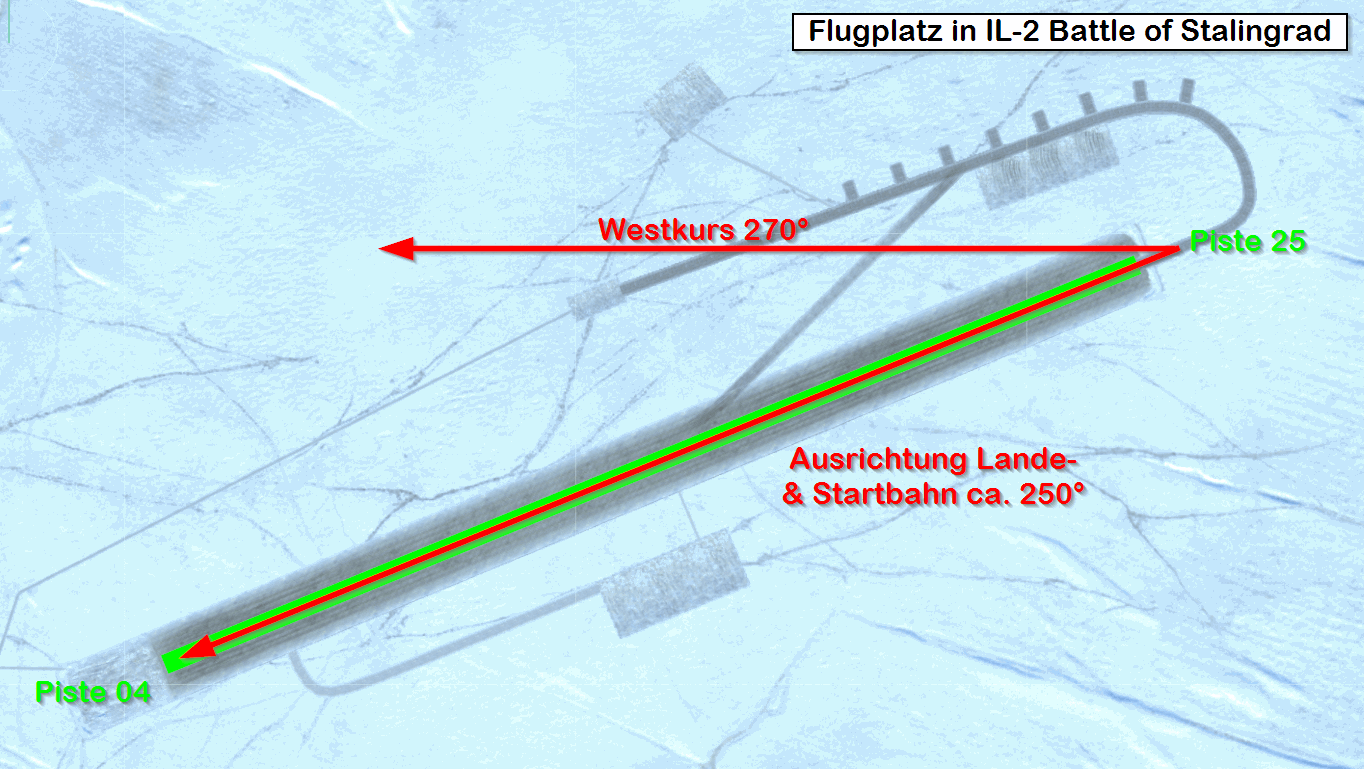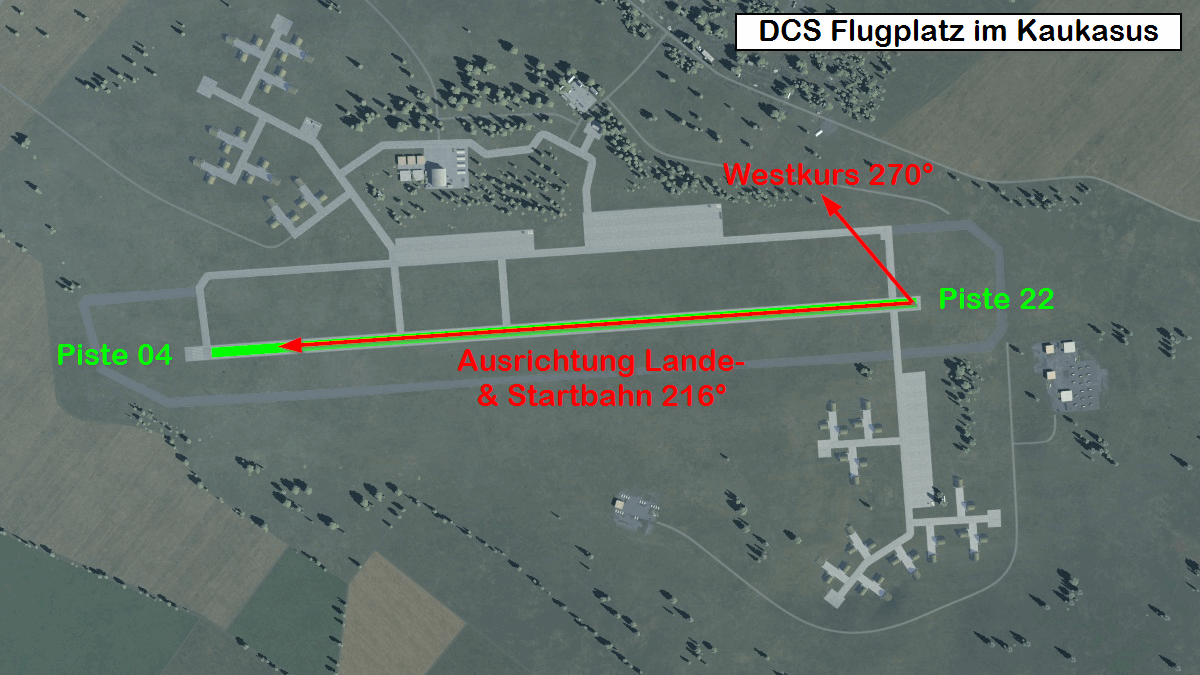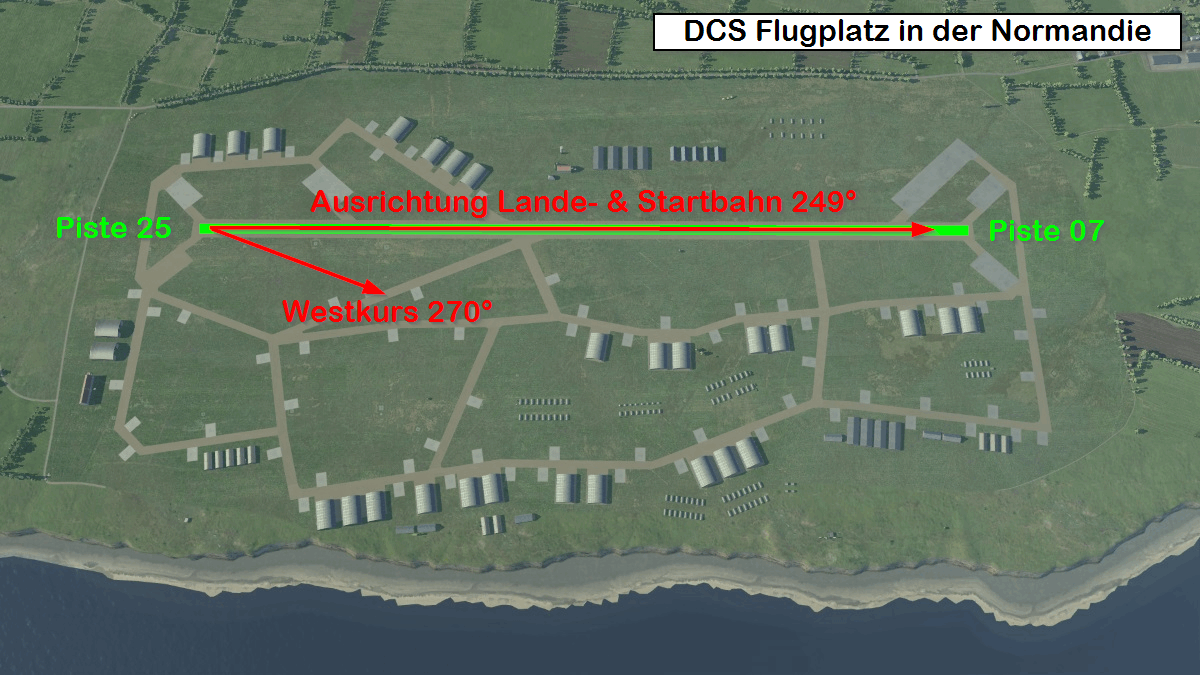The Airfield: Structure, Traffic Rules and Procedures
1. Construction of an Airfield
1.3. Runway
The runway is well known by everyone. But very few of them will have stood on one with their own feet. The runway of a small airfield often consists of only one grass strip, while larger airfields usually have concrete runways. These can be more than 30 meters wide and between 5,000 feet and 7,500 feet long.
The runway is usually labeled with two numbers at the beginning of the runway for better identification from the air. Multiplied by a factor of 10, these give the compass orientation of the runway in magnetic heading, which is accurate to 10 degrees. The exact orientation can be read from the airport plans.
According to the wind, planes take off in one direction or the other, so that they have the wind from ahead.
If there are several runways in the same direction, they are named Left or Right (see picture below IL-2).
Examples from IL-2 Sturmovik
The following pictures show the runways of two airfields from IL-2 Sturmovik.
Examples from DCS
The runways on two DCS airfields are shown here. Left from the Caucasus Map (Anapa Vityazevo) and right from Normandy (Saint Pierre du Mont).




